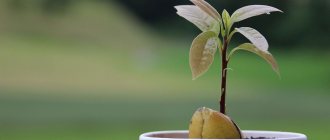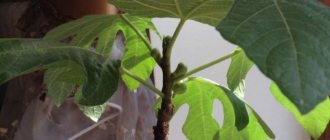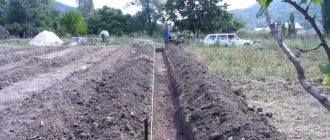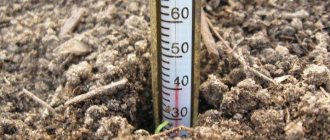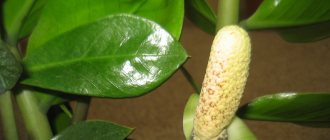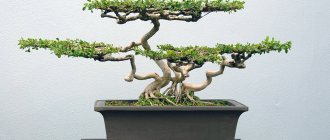Reading time: 6 minutes(s) The fig tree or fig, fig, wineberry is the most revered tree of the East. In many regions it is considered sacred and surrounded by legends. For Russian latitudes, figs are an exotic fruit. However, due to active imports, it can no longer be considered a curiosity.
It was not for nothing that the Romans believed in the healing properties of the fig fruit. It has long been known that it gives health, courage and strengthens fortitude.
Where and how does the fig tree grow?
The tree is of Western Asian origin and grows in the south of Crimea, in Azerbaijan. And also in the Caucasus and Transcaucasia. Also in the Carpathians, Krasnodar Territory, Rome, Australia, India, Central Asia and Iran.
For successful cultivation of fig trees, a mild climate is very important. Therefore, outside of natural conditions, figs are grown only in greenhouses. It is pruned to form a bush, and covered or buried in the winter.
In addition, fig cultivation is complicated by aganoids. These are very small insects. Which make their way into the fig tree through the hole during the flowering period and take over it. Then a queen and a swarm appear in it.
It should be noted that fig flowers are pollinated and begin to mature with the help of wasps. By the time the fig is ripe, harmful insects leave it and occupy the new fruit.
Thus, it is impossible to grow fig trees in the cold and in the open air. It is also difficult to breed them in botanical gardens. Therefore, breeders began to develop self-fertilizing varieties of fig trees. Today this trend is successfully developing. Moreover, special varieties of figs appeared in greenhouses and botanical gardens. And they are already able to withstand frosts down to -20 degrees.
Planting a seedling after purchase
Thuja - tree, what it looks like, varieties and varieties
A seedling can be grown in two main ways: at an angle of 45 degrees and with the formation of a horizontal cordon. In the first case, bending down the branches in front of the shelter is easier. In the second case, the seedling is planted vertically, its top is cut off. Side shoots bend to the ground.
Planting figs
The shoots are arranged like sleeves directed in different directions. They form buds from which branches grow. The fig harvest ripens on them.
What is needed for planting
For planting, a hole is dug about one and a half meters long, about a meter wide and up to 80 cm deep. Great depth is not needed, because the roots of this plant branch horizontally.
The top layer of soil must be folded separately, it is then poured into the hole. One and a half buckets of humus (it can be replaced with compost), 200 grams, is placed at its bottom. superphosphate and the same amount of potassium fertilizer. Then a small layer of fertile soil is poured.
A mound is formed in the hole on which the roots of the seedling are distributed. They are covered with earth, compacted and watered abundantly.
The plant is planted in open soil around the beginning of May, when the threat of night frosts has finally passed.
Optimal place
First you need to choose the warmest place in the garden that is protected from cold winds. A trench is dug if several plants need to be planted at once.
Fig varieties
Figs are eaten all over the world and valued for their health benefits. Breeders are trying to develop more and more new varieties. The most common varieties of figs for production and trade are:
- Nikitsky. It has a spherical shape and light green skin with a pink side
- Dalmatian , also known as white Turkish. It has a thick skin and yellow-green color. The pink-brown flesh of syconium produces a pleasant aroma
- Kadota. It has a more flattened pear-shaped shape and brightly colored flesh;
- Sochi . Matte fruit with a light color, which belongs to frost-resistant varieties;
- Moisson Crimean. Figs are dark purple in color and pear-shaped.
- Honey. One of the sweetest varieties of figs;
- Verte or strawberry . Pear-shaped fruits are green in color with purple sides, which are distinguished by their very sweet taste;
- Brown Turkish. The most common option offered by supermarkets. Typically pear-shaped and brownish-purple in color.
Quite often the fig tree is confused with the sapwood. However, these are different types of trees of the same ficus family. Moreover, they have similar fruits. However, in sycamore they are endowed with a less pronounced taste and color. Many argue that the sycamore tree is the fig tree that was mentioned several times in the Bible.
Flowers
Figs are blooming, but few people mistake their flowers for such. Outwardly, they look like small immature fruits - round or pear-shaped, dark green, hard. The expression “get a fig,” that is, “get nothing,” according to one version, was born precisely because half of these “fruits” that abundantly strew the branches fall off. These are actually fig flowers. More precisely, the structure of the inflorescences. Real fig tree flowers can only be seen if the fruit is cut in half. Inside there will be dozens of inconspicuous small flowers, which will later turn into grains on whitish fibers, immersed in a sweet, viscous pulp. The fig, or common fig tree, has flowers of both sexes. The female ones, called figs, have five tiny petals and a pistil that looks like a snake's tongue. The male ones, called caprifigae, have three petals and three stamens.
Legends about figs
Figs are one of the oldest trees on our planet. All legends about the birth of Eastern wisdom contain mention of the fig tree. According to legend, enlightenment overtook the sage Buddha in the shade of this tree. And that is why the fig tree is also called the “tree of knowledge.”
Tree of knowledge and Buddha
As for Christianity, it was the fig that became the first tree mentioned in the Holy Scriptures. She is a symbol of fertility and obedience. Fig leaves served as clothing for Adam and Eve. In the New Testament, the tree fell into disgrace with the Son of God for lack of fruit.
In Egyptian legends, figs are identified with the sky goddesses Hathor, Yhet and Nut. According to legend, mothers of life preferred this product as food. In Egypt they also believed that the Sun was born from the fig tree in the morning.
According to legend, the founders of Rome, Romulus and Remus, owe their lives to the fig tree. A basket with babies was detained in a stormy river by the branches of this tree. That is why they did not die in the waters of the fast river. And only then the she-wolf found and nursed the children.
Fig tree propagation
There are several ways to propagate this tree. They differ from each other in the degree of labor intensity and percentage of germination.
Seeds
Propagation by seeds is considered the most labor-intensive and unreliable method. Seeds can be purchased at the store or obtained from fresh fruit. To do this, they need to be washed and dried. The seeds retain their properties for several years.
Fig seeds
For germination you will need the seeds themselves, a pot or tray, drainage and soil. A small layer of drainage is placed at the bottom of the pot, then soil is filled in. Several seeds are placed in a shallow hole at once. After moistening the soil, cover the pot with film.
The first shoots should appear no earlier than in a month. After the sprouts get stronger and grow, they need to be planted in a separate pot or garden.
By layering
An easier and simpler method of propagation is by layering. With their help you can get a new tree in 2 years. This method is only suitable if there is already one mature and healthy fig tree on the site.
To carry out reproduction using this method, the following steps are carried out:
- a small hole about a quarter of a meter deep is prepared next to the trunk;
- one of the branches of the tree is bent horizontally and fixed in the hole;
- The layering is covered with mulch on top.
Using cuttings
For this method you will need a mature fig tree. To get cuttings, use a sharp knife to cut off several strong branches with buds. Their length should be about 15 centimeters.
The harvested branches are dried for several days, then the cuts are disinfected and placed in pots with soil.
To create heat, the pot is wrapped in film. Until the cutting grows its own root system, it needs to be moistened and ventilated. Typically this process takes no more than two months.
Composition and nutritional properties of figs
Figs contain the daily requirement of silicon. This microelement is involved in the processes of collagen production in the body. The ancient Greeks and Romans considered the fruit of the fig tree to be a product of youth.
In addition, figs are very rich in other various substances. Per 100 grams of product there are:
| KBZHU | sugar (g) | fiber (g) | vitamin A (mg) | beta carotene (mg) | K (mg) | B9 (mg) | C (mg) | |
| fresh figs | 74/0,75/0,30/19,18 | 16,3 | 2,9 | 7 | 85 | 4,7 | 6 | 2 |
| dried figs | 249/3,3/0,93/63,9 | 47,9 | 9,8 | — | 6 | 15,6 | 9 | 1,2 |
In addition to fat- and water-soluble elements, figs contain a number of useful minerals:
| potassium (mg) | calcium (mg) | magnesium (mg) | phosphorus (mg) | sodium (mg) | iron (mg) | zinc (mg) | selenium (mg) | manganese (mg) | copper (mg) | |
| fresh figs | 232 | 35 | 17 | 14 | 1 | 0,4 | 0,2 | 0,2 | 0,1 | 0,1 |
| dried figs | 680 | 162 | 68 | 67 | 10 | 2 | 0,6 | 0,6 | 0,5 | 0,3 |
Fig tree fruits contain 18 essential and essential amino acids. Not to mention that among them there are also those necessary for the health of the muscular system and other tissues.
Interesting Facts
The fig tree is a close relative of the indoor ficus and distant relatives of the mulberry. Knowing their relationship, scientists spent many years crossing figs with frost-resistant mulberries. In America, the then famous scientist Luther Burbank tried to implement this idea. However, the Crimean naturalist Ya.I. was able to turn the idea into reality. Bomyk. In the harsh winter of 1950, when frosts reached -20°C, ordinary figs died out, only the fig-mulberry hybrid Bomyka survived.
The gallery below presents photos of a fig tree, which clearly shows all the characteristic features of this amazing and not fully studied plant.
Benefits of figs
It is more beneficial for the body to eat fresh figs. However, if this is not possible, then you can use the dried version of the product. As stated above, the fruits of the fig tree have a very useful composition. Also, figs are the absolute leader in potassium and iron content.
In addition, the fruit has strong antioxidant properties. Figs have a positive effect on many things:
- Supports the cardiovascular system because it is rich in potassium and magnesium. These microelements help normalize blood pressure and strengthen the walls of blood vessels. In addition to potassium and magnesium, fig fruits contain ficin. This is a special enzyme that destroys blood clots and plaques in blood vessels;
- Increases the body's immune strength. Due to the content of beta-carotene, wine berries have an immunostimulating effect. Figs can be included in homemade immune-boosting treats. And take it on an ongoing basis during the off-season;
- Expectorant action. Eating figs is an additional measure in the treatment of cough and bronchitis. It has not only an expectorant, but also an antimicrobial effect. To enhance the effect of the fruit on the body, it is consumed with milk during illness;
- Stabilizes the functioning of the gastrointestinal tract. Siconia figs are high in fiber. This is what improves the functioning of the digestive tract. For the same reason, its use should be limited in case of disorders in the gastrointestinal tract;
- The condition of the skin, hair and nails improves. Because figs are rich in antioxidants. These substances slow down the process of cell oxidation, accelerate their regeneration and prolong youth;
- Cleansing the body. Decay products are removed from the body with the help of pectin;
- Uplifting mood. Thanks to a large amount of B vitamins, figs improve overall well-being and give strength;
- Reducing fever and temperature during a cold;
- Male reproductive system. Eating fig berries helps increase sexual libido and prevents prostatitis.
- Fig fruits contain large amounts of phosphorus. This microelement has a positive effect on the condition of the joints, and also stimulates the normal functioning of the kidneys and liver.
- Since ancient times, the Romans and Greeks used not only fig fruits, but also leaves. With the help of decoctions and infusions from them, they treated a wide range of skin diseases.
Life with figs
Care
Following the care recommendations increases the stability of figs and its productivity.
Fig care
Watering mode
Seedlings are watered very abundantly after planting. In the future, the frequency of watering is reduced to several times a month. However, it is impossible to completely stop watering during the formation of inflorescences, because the plant is moisture-loving. To save water, it is recommended to mulch.
Watering stops only during the period of fruit ripening. The plant is watered for the last time after all the fruits have been collected. This increases its frost resistance.
Top dressing
The rules for feeding the plant are as follows:
- Nitrogen fertilizers are applied in the first third of the growing season.
- In the middle of summer, phosphates need to be added.
- Potassium fertilizers are applied in late summer and early autumn.
- Every month, microelements necessary for tree growth are added.
- Foliar feeding is carried out 2 times a month.
- Organic fertilizers include soil and humic acids.
Why don't figs bear fruit?
Readers are interested in why figs drop their fruits. The plant may not bear fruit due to pests. Most common:
- moth (causes rotting of fruits, causing flowers to fall off and crumble);
- leaf roller (infects the plant so that the leaves may turn yellow, the fruits rot, the stem dries out, and the figs stop flowering);
- psyllid slows down the development of the stem;
- The pine beetle infects the bark, causing the plant to die.
pine beetle
Feeding during fruiting
During the fruiting period, potassium fertilizers are applied. It is important to feed the plant before the end of the growing season, i.e. when the second stage of fruit ripens.
Preparing for winter
In autumn, when all the leaves have fallen, the bushes bend to the ground. Then they are tied and sprinkled with earth or dry leaves. You can cover the plant with layers of leaves or spruce branches, and additionally protect it with roofing material on top.
Note! You need to bend the branches very carefully so as not to break them.
When frost sets in, the branches are covered with black spunbond (2 layers). After some time, the plant is additionally covered with a layer of plastic film.
In spring, the shelter is gradually removed. It can be completely removed only when stable spring weather sets in without a return of frost.
Figs are a beautiful heat-loving plant that decorates the garden and bears delicious fruits. It is not difficult to grow, despite its vulnerability to frost.
Limitations and harm
The most controversial issue is the harm of figs. The fact is that the fig tree fruit contains a high percentage of sugar. Sometimes this figure can exceed 70%. This content may be dangerous for people with diabetes. However, the special composition of figs inhibits sudden surges in blood sugar.
Fresh fruit has a glycemic index of 55. Dried delicacy - 65. This should be taken into account by people with health conditions. Fresh figs will give the body 49 kcal. When dried, the figure increases to 257 kcal. People who are trying to lose weight should limit their consumption of dried fruits.
Wine berries can cause an allergic reaction. Therefore, carefully introduce the fruit into the children's diet. And also limit its consumption during pregnancy and lactation.
How to eat figs
It is used for sweet and savory dishes. Figs are also actively used for serving dishes. There are no peculiarities in matters of use. It is enough to wash the fig and eat it whole with peel and seeds. This is the most ideal way to consume figs.
This way the human body will receive the maximum amount of benefit. However, the fruits quickly deteriorate and cannot be stored for long periods of time. Therefore, they are often dried and also canned in the form of snacks and jam.
Fresh figs and 9 best ways to prepare them
Combination with products
How figs are eaten depends on tradition and personal preference. We have prepared our recipes with figs for you. A common classic is to eat wineberries with cured ham. Figs are successfully combined in cooking with meat dishes. It is stuffed with minced meat and served with foie gras. A slice of fresh fig is often served with meat dishes.
Fig fruit is suitable not only for appetizers and main courses. It is used in recipes for fruit salads and other desserts. As a dessert, fresh figs can be served as a separate dish.
Fig tree fruits are combined with dairy products. They can be added to cottage cheese for breakfast. Or top slices of figs on cream cheese sandwiches.
Description
Some have never seen what a fig tree looks like. In nature, it reaches a height of 7-8 meters. Its branches are spreading, the crown is thick, and the bark is light brown. Sometimes figs grow as a lush, tall bush. Its leaves are hard, quite large, vaguely reminiscent of maple. According to its biological rhythms, the fig tree is deciduous. In regions with a subtropical climate, where in winter the average temperature does not fall below +5 +10, the plant may not shed its leaves at all or only shed them for a couple of months. This phenomenon is also observed in other deciduous plants, for example, poplar. In Russia, it bares branches already in October, and in the south of Greece only in December, only to be covered with young foliage again in February. Fig trees live up to 100 years (according to some sources, 30-60). Some specimens live up to 200 years. In India there is one fig tree, which, according to the locals, is as much as three thousand years old.
Recipes
Strudel with figs
Homemade strudel with figs
The strudel is amazingly good, melts in your mouth and makes a great addition to your morning coffee.
Sauce for fig meat
Sauce for fig meat
The sweet notes of figs perfectly highlight the taste of baked duck. The standard recipe uses apples, which can be effectively replaced with our sauce
How to select and store figs
The vast majority of figs on our shelves are imported. During transportation, fruits may be damaged and spoiled. Therefore, when choosing figs, you need to be careful. You should not buy syconium with scratched or damaged skin. This will speed up the oxidation and fermentation process.
With prolonged and improper storage, figs begin to deteriorate from the inside without visible marks on the outside. To recognize this, just inhale the aroma of figs. A sour smell will come from the hole at the top of the fruit.
It is better to store dried and ripe figs in refrigerators. The fruit has a high sugar content, which at room temperature provokes fermentation. Ripe figs cannot be stored for longer than 5 days. The dried version can be stored in the cold for up to six months.
Growing a fig tree in open ground
Chestnut - a tree with flowers, description of how to plant and grow
The fig tree grows well at home. But, unfortunately, it does not produce a harvest. Therefore, many gardeners prefer to plant the plant in open ground. This option is suitable only for residents of warm regions.
Fig bush in the garden
Selection of location and soil
The landing site should be well lit. You should not plant a tree in a low area or shade - it will not take root there. The presence of groundwater is an optional but desirable factor.
The quality of the soil does not play a special role. The main condition is that it must pass water well. Before planting, the soil is weeded and enriched with humus or compost. It is also necessary to add a thick layer of drainage - about ¼ meter.
Landing
There are two methods of planting a plant in open ground - trench and in a hole. You need to choose a method based on the climatic conditions of the area.
Important! The trench method is suitable for those who live in colder regions. It allows you to protect the plant from harsh weather conditions.
Growing fig trees on a plantation using the trench method
The step-by-step process is as follows:
- Soil preparation. Several deep trenches are dug on a selected plot of land. The dimensions of the trenches are adjusted depending on the climate - the colder the region, the larger the pit should be. The approximate depth is a meter and a half, the width is from half a meter to a meter.
- Strengthening the trench. The walls of the trench are lined with stone, brick or board. This will help retain heat in the root system in winter.
- Preparing holes for seedlings. At the bottom of the trench, small holes are dug for future plants. A layer of drainage and enriched soil is also placed there.
- Landing. Seedlings are placed in holes and watered.
- Greenhouse installation. To create a protective dome you will need garden arches and dense covering material.
The second method is suitable for residents of the southern part of Russia.
Planting a tree in a hole:
- Preparing the hole. A hole about a square meter in size is dug in open ground. A layer of drainage and soil is poured onto the bottom. As in the previous method, the walls are reinforced with stone or brick. Before planting seedlings, the soil is moistened with plenty of water.
- Disembarkation. The fig sprout is placed at the bottom of the hole and carefully covered with earth.

